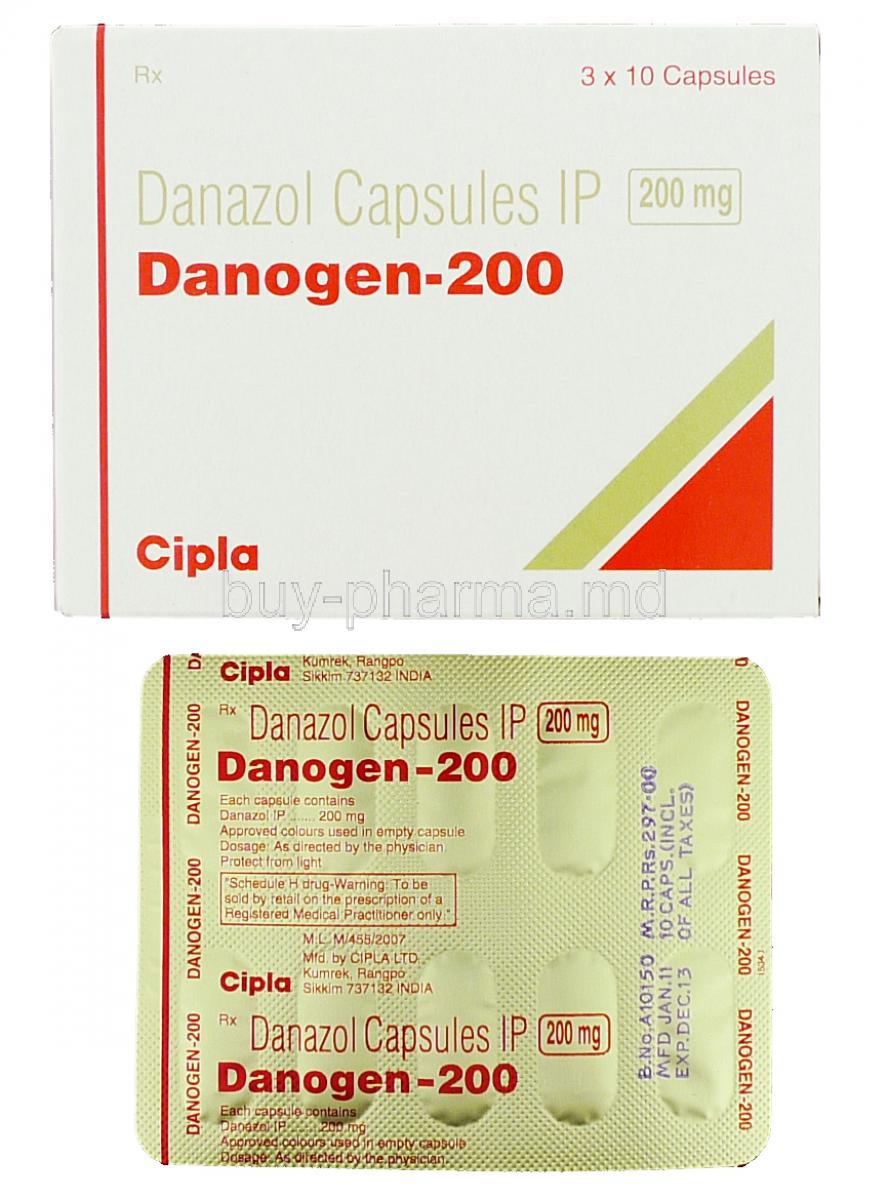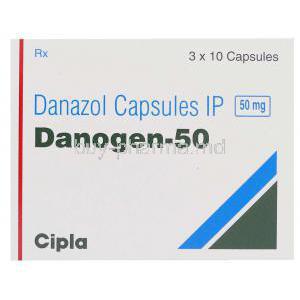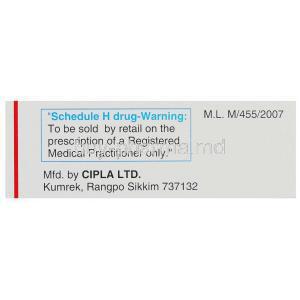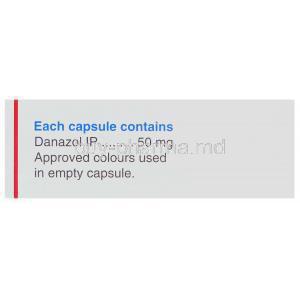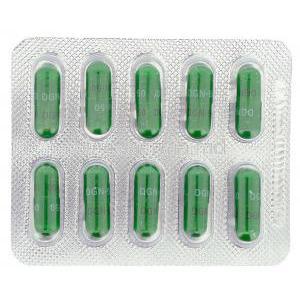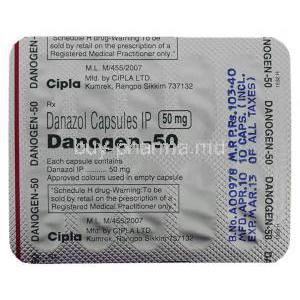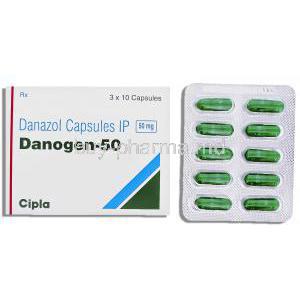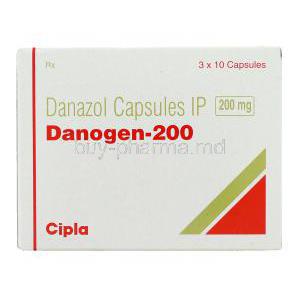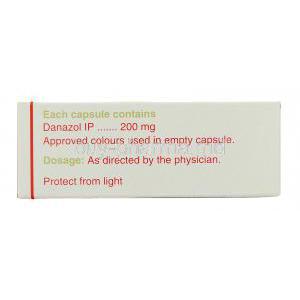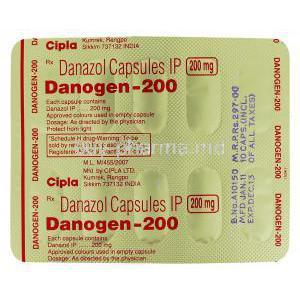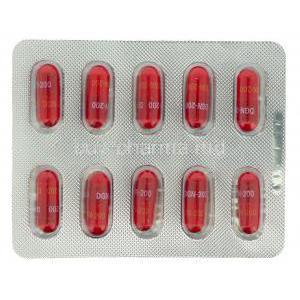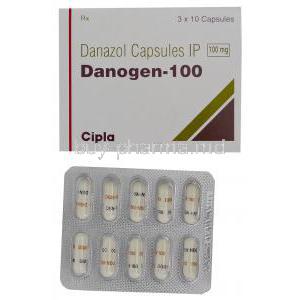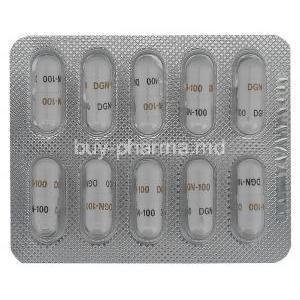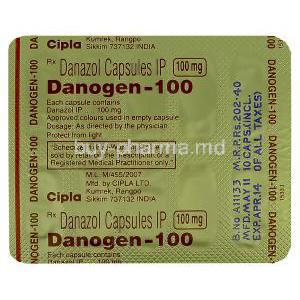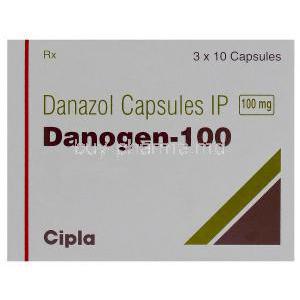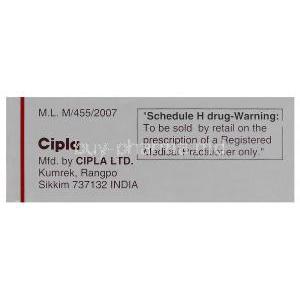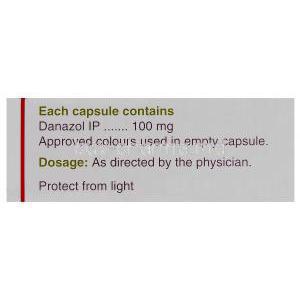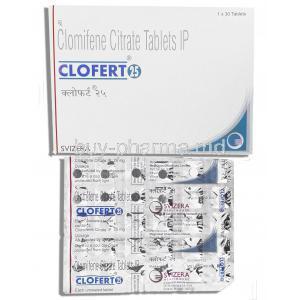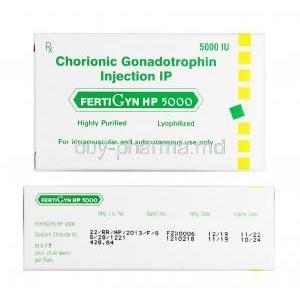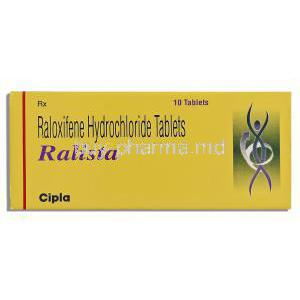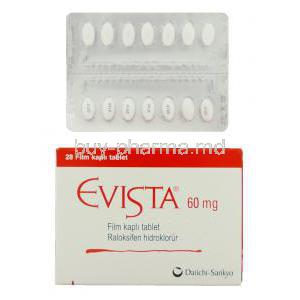Introduction
Overview of Danogen (Danazol)
Danogen, with the active component Danazol, is a synthetic steroid derived from ethisterone. It is primarily utilized in conditions linked to hormonal imbalance and immunological dysregulation. Its wide-ranging pharmacological profile enables it to address complex disorders where conventional therapies may falter.
Historical Background and Approval Status
Danazol was first introduced in the 1970s as a therapeutic option for endometriosis, a condition that lacked effective treatments at the time. Over the decades, it received approval in multiple regions for gynecological and hematological conditions. Although its use has diminished with the advent of newer agents, Danazol remains clinically significant in certain therapeutic niches.
Therapeutic Classification and Drug Category
Danazol belongs to the category of synthetic androgens with antigonadotropic and weak anabolic activity. It is classified as a gonadotropin inhibitor, acting at the pituitary-hypothalamic axis, and has additional immunomodulatory effects. This unique blend of properties distinguishes it from conventional steroidal therapies.
Composition and Formulation
Active Ingredient: Danazol
The core active pharmaceutical ingredient in Danogen is Danazol, a synthetic derivative of testosterone. Its structural modifications enhance bioavailability and reduce rapid metabolism, ensuring a more predictable therapeutic effect.
Available Strengths and Dosage Forms
- Capsules in varying strengths, typically 50 mg, 100 mg, and 200 mg
- Oral formulations designed for systemic absorption
Excipients and Inactive Ingredients
In addition to Danazol, Danogen capsules may contain excipients such as lactose, starch, magnesium stearate, and gelatin. These inactive constituents facilitate stability, absorption, and overall efficacy of the medication.
Provera vs danazol
Provera (medroxyprogesterone) is a progestin that regulates menstrual cycles and protects the uterus, while Danazol is a gonadotropin inhibitor that decreases estrogen and other hormone levels. Both can be used to treat endometriosis, but Danazol is not a first-choice treatment due to its more significant androgenic side effects such as weight gain, acne, and voice changes.
Danazol Mechanism of Action
Androgenic and Anti-Gonadotropic Properties
Danazol exhibits weak androgenic activity while strongly suppressing the secretion of gonadotropins. This leads to decreased ovarian steroid production, a cornerstone mechanism in controlling estrogen-dependent conditions.
Suppression of Pituitary Gonadotropin Release
By inhibiting luteinizing hormone (LH) and follicle-stimulating hormone (FSH), Danazol halts the cyclical hormonal fluctuations that exacerbate disorders such as endometriosis and fibrocystic breast disease.
Effects on Estrogen, Progesterone, and Testosterone Balance
The drug reduces circulating levels of estrogen and progesterone, while imparting mild androgenic effects. This shift in hormonal milieu creates an environment unfavorable for the progression of estrogen-dependent pathology.
Immunomodulatory Activity
Beyond endocrine regulation, Danazol demonstrates immune-modifying properties. It stabilizes complement levels in hereditary angioedema and has been explored in autoimmune disorders due to its capacity to temper aberrant immune responses.
Danazol Uses
Danazol Endometriosis Management and Symptom Relief
Danazol suppresses ectopic endometrial tissue growth, alleviating pelvic pain, dysmenorrhea, and infertility associated with the condition. It remains an option for refractory cases where hormonal contraceptives are ineffective.
Treatment of Fibrocystic Breast Disease
By reducing estrogenic stimulation, Danazol diminishes mastalgia, nodularity, and tenderness in patients with fibrocystic breast changes. Symptom control often leads to improved quality of life.
Hereditary Angioedema Prophylaxis
Danazol enhances hepatic synthesis of C1-esterase inhibitor, preventing recurrent episodes of swelling in hereditary angioedema. This indication remains one of its most critical therapeutic roles.
Use in Gynecological Disorders
Danazol has applications in dysfunctional uterine bleeding and certain infertility cases where suppression of endogenous hormones facilitates control over reproductive cycles.
Off-Label and Investigational Uses
Immune-Mediated Thrombocytopenia
Danazol has shown benefit in elevating platelet counts in refractory cases of immune thrombocytopenic purpura (ITP), particularly when other immunosuppressive agents have failed.
Systemic Lupus Erythematosus (SLE)
Due to its immunomodulatory activity, Danazol has been studied in lupus patients with promising effects on disease manifestations such as cytopenias.
Danazol Myelofibrosis - Aplastic Anemia and Other Hematological Conditions
In select cases, Danazol has been employed to stimulate hematopoiesis, providing a supportive role in marrow failure syndromes.
Rare Hormonal or Endocrine Disorders
Investigational usage includes treatment of gynecomastia, hormone-sensitive tumors, and select adrenal disorders, although evidence remains limited.
Danazol for males
It is suggested that danazol plus relatively small doses of testosterone may prove to be an effective and safe male contraceptive.
Danazol bodybuilding
Danazol is widely used in the treatment of en- dometriosis. Although termed an impeded androgen, it has both anabolic and androgenic activities in certain tissues. Weight gain is a fairly consistent feature of the treatment.
Dosage and Administration
General Dosage Guidelines for Adults
Typical daily doses range between 200–800 mg, administered in divided doses depending on the condition and severity. Initiation should be individualized and titrated cautiously.
Dosage for Specific Conditions
- Endometriosis: 200–400 mg daily in divided doses
- Fibrocystic Breast Disease: 100–400 mg daily
- Hereditary Angioedema: 200 mg daily, adjusted for prophylaxis
Titration and Individualized Dose Adjustments
Dosing should be tapered to the lowest effective level to minimize adverse effects. Close monitoring ensures therapeutic goals are achieved without unnecessary toxicity.
Duration of Therapy and Discontinuation Considerations
Treatment durations often span 3–6 months for endometriosis, while hereditary angioedema prophylaxis may require extended use. Gradual tapering is advised where feasible.
Methods of Administration
Danazol is taken orally, preferably with food to enhance absorption and reduce gastrointestinal discomfort. Consistent timing aids in maintaining stable plasma concentrations.
Important Precautions and Careful Administration
Monitoring During Long-Term Use
Patients on prolonged therapy should undergo regular liver function tests, lipid profiling, and gynecological assessments. This ensures early detection of complications.
Risk of Virilization in Women
Prolonged androgenic exposure may cause irreversible deepening of the voice, clitoral hypertrophy, and hirsutism. Caution is essential in women of reproductive age.
Effects on Lipid Profile and Liver Function
Danazol can elevate LDL cholesterol and cause hepatotoxicity. Regular laboratory evaluation mitigates the risk of cardiovascular and hepatic sequelae.
Hormonal Imbalances and Menstrual Irregularities
Amenorrhea and unpredictable bleeding patterns are common. These changes reflect the profound suppression of ovarian activity induced by therapy.
Special Populations
Administration to Elderly Patients
In older adults, reduced hepatic and renal clearance necessitates dosage adjustments. Vigilant monitoring reduces the likelihood of toxicity in this population.
Administration to Pregnant Women
Danazol is contraindicated in pregnancy due to teratogenicity, particularly risks of virilization in female fetuses. Women of childbearing potential should employ effective contraception during treatment.
Administration to Nursing Mothers
Excretion of Danazol into breast milk has been documented. Neonatal androgenic effects may occur; therefore, breastfeeding is not recommended during therapy.
Administration to Children and Adolescents
The safety profile in pediatric patients is not well established. Potential effects on growth, bone maturation, and puberty restrict its use to rare, carefully monitored cases.
Side Effects of Danazol
Common Side Effects: Weight Gain, Acne, Oily Skin, Hirsutism, Voice Deepening
Danogen (Danazol) may induce androgen-related manifestations in a proportion of patients. These include:
- Weight gain due to fluid retention and metabolic alteration
- Acne and seborrhea from increased sebaceous gland activity
- Excessive hair growth (hirsutism) in androgen-sensitive areas
- Voice deepening, which may be irreversible in some cases
Although often tolerable, these effects may affect cosmetic appearance and quality of life.
Menstrual Irregularities and Amenorrhea
Danazol suppresses pituitary gonadotropins, leading to disrupted menstrual cycles. Many women experience:
- Irregular bleeding or spotting
- Complete cessation of menstruation (amenorrhea)
These changes reflect therapeutic suppression of ovarian activity but can create concern for patients requiring reproductive planning.
Mood Changes and Psychological Effects
Alterations in mood and emotional state are reported during therapy. Manifestations include irritability, depressive tendencies, anxiety, or insomnia. Patients with pre-existing psychiatric conditions require close surveillance as symptoms may intensify.
Rare but Serious Side Effects: Liver Toxicity, Thromboembolic Events, Intracranial Hypertension
Though uncommon, severe adverse reactions demand attention:
- Liver toxicity – cholestatic jaundice, hepatic adenoma, and elevated liver enzymes
- Thromboembolic events – deep vein thrombosis, pulmonary embolism, myocardial infarction
- Intracranial hypertension – headaches, blurred vision, papilledema
These complications necessitate prompt discontinuation and medical evaluation.
Contraindications
Absolute Contraindications
Danogen must not be used in the following conditions:
- Pregnancy due to teratogenic and virilizing risks
- Breastfeeding, as the drug passes into milk and affects neonates
- Severe hepatic, renal, or cardiac dysfunction
- Androgen-dependent neoplasms such as prostate or breast carcinoma
Relative Contraindications
Caution is required in patients with:
- Cardiovascular disorders, particularly ischemic heart disease
- Lipid metabolism abnormalities predisposing to atherosclerosis
- Uncontrolled hypertension
Drug Interactions
Interaction with Anticoagulants (e.g., Warfarin)
Danogen potentiates the effect of warfarin and similar anticoagulants, increasing the risk of hemorrhage. Dose adjustments and frequent INR monitoring are necessary.
Interaction with Antidiabetic Agents and Insulin
Danogen may reduce glucose tolerance and antagonize insulin or oral hypoglycemics, necessitating tighter blood sugar control.
Cytochrome P450–Mediated Interactions
As a modulator of hepatic enzymes, Danogen alters the metabolism of various medications, including anticonvulsants and immunosuppressants. This necessitates dose adjustments of co-administered drugs.
Alcohol and Hepatotoxic Medications
Concurrent alcohol or hepatotoxic drugs (e.g., high-dose acetaminophen, isoniazid) heighten the risk of liver injury and must be avoided where possible.
Warnings and Safety Considerations
Long-Term Safety Concerns
Chronic use has been linked with hepatic adenomas, lipid abnormalities, and irreversible androgenic effects. Continuous therapy should be limited to the lowest effective duration.
Monitoring Liver Enzymes and Lipid Profile
Regular biochemical assessments are indispensable, especially in patients undergoing prolonged treatment. Elevations in cholesterol, triglycerides, and liver enzymes necessitate intervention.
Risk of Androgenic Effects in Women
Voice alteration, hirsutism, and clitoral hypertrophy may persist even after cessation. Early recognition and dose reduction reduce the likelihood of permanence.
Use in Patients with Cardiovascular Risks
Patients with pre-existing heart disease or dyslipidemia face heightened risk. Clinical surveillance and preventive strategies are advised during therapy.
Overdosage and Emergency Management
Symptoms of Overdose
Excessive intake may provoke:
- Nausea and dizziness
- Exaggerated androgenic manifestations such as virilization
- Severe menstrual disturbances
Immediate Management and Supportive Care
No specific antidote exists. Management consists of gastric decontamination if recent ingestion occurred, supportive care, and symptomatic relief. Hospital monitoring is essential in significant overdoses.
Long-Term Monitoring After Overdose
Post-overdose, patients require endocrine and hepatic evaluation for delayed effects. Recovery is generally favorable with appropriate intervention.
Storage and Handling Precautions
Recommended Storage Temperature and Conditions
Danogen capsules should be stored below 25°C, away from moisture and direct sunlight. High humidity and heat degrade potency.
Protecting from Light, Moisture, and Heat
Original packaging provides optimal protection. Blister strips should not be removed until consumption.
Safe Handling Instructions
Care should be taken to keep the medication out of reach of children and pets. Patients must avoid sharing the medication with others, even with similar symptoms.
Shelf Life and Disposal Guidance
Expired capsules should not be used. Disposal should comply with local pharmaceutical waste regulations to avoid environmental contamination.
Conclusion
Summary of Therapeutic Role of Danogen (Danazol)
Danogen remains a valuable therapeutic option for endometriosis, fibrocystic breast disease, and hereditary angioedema, despite the availability of newer agents. Its multifaceted mechanism renders it beneficial where hormonal suppression and immune modulation are required.
Key Considerations for Safe and Effective Use
Appropriate patient selection, vigilant monitoring, and awareness of drug interactions ensure safe therapy. Limiting treatment duration and employing the lowest effective dose reduce complications.
Future Directions and Ongoing Research
Current research explores novel analogues with reduced androgenic burden, as well as potential roles in rare immunological and hematological disorders. Danogen thus retains clinical relevance as both a therapeutic agent and a foundation for further pharmacological innovation.
Danogen, Danazol FAQ
- What is the drug danazol used for?
- What is the drug Danogen used for?
- Why do men take danazol?
- How long can you use danazol?
- What are the side effects of Danogen 200?
- How fast does danazol work?
- Does danazol cause high blood pressure?
- Can danazol affect fertility?
- Is danazol the same as Letrozole?
- When should I take danazol?
- Does danazol increase hemoglobin?
- Is danazol a steroid?
- Can danazol cause osteoporosis?
- Can danazol shrink fibroids?
- Can danazol stop periods?
- How does Danogen work?
- How long does danazol stay in your system?
What is the drug danazol used for?
Danazol is used to treat a handful of conditions, including endometriosis, a disorder where tissue grows outside the uterus. It's also prescribed to alleviate symptoms of fibrocystic breast disease, which can cause lumps and tenderness in the breasts. On top of that, danazol is sometimes given to people who experience reactions, known as angioedema, which can be life-threatening if not properly managed.
What is the drug Danogen used for?
It's often prescribed for endometriosis, a condition where the lining of the uterus grows abnormally. The capsule is also used to treat breast disease, which's a non cancerous condition that causes breasts to become swollen and tender.
Why do men take danazol?
Research indicates that combining danazol with doses of testosterone could make for a safe birth control option for men.
How long can you use danazol?
3-9 months
What are the side effects of Danogen 200?
- Weight gain
- Acne
- Amennorrhea
- Nausea
How fast does danazol work?
Many weeks
Does danazol cause high blood pressure?
Yes
Can danazol affect fertility?
No
Is danazol the same as Letrozole?
No
When should I take danazol?
Twice a day
Does danazol increase hemoglobin?
Yes
Is danazol a steroid?
Danazol is a synthetic steroid
Can danazol cause osteoporosis?
No
Can danazol shrink fibroids?
This process essentially tips the balance of hormones in the body, creating an environment with high levels of androgen and low levels of estrogen. As a result the lining of the uterus, known as the endometrium starts to waste.
Can danazol stop periods?
Yes
How does Danogen work?
It lessens the amount of hormones, like estrogen and progesterone circulating in the body. Doing it provides relief from symptoms associated with things like endometriosis, painful periods, and breast tenderness.
How long does danazol stay in your system?
Acute: 3–10 hours Chronic: 24–26 hours

